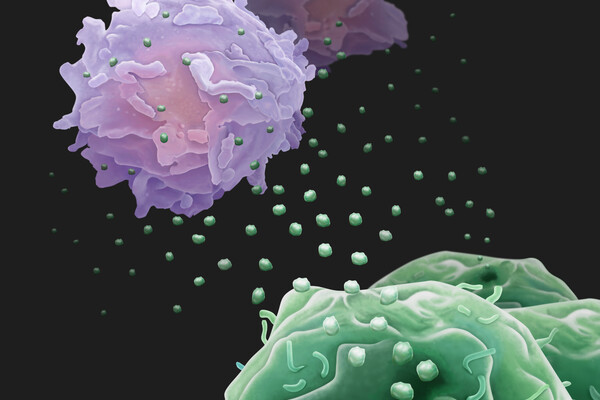
Like drones heading for battle, cancer cells emit vesicles containing immunity-suppressing proteins to tamp down T cell responses at sites throughout the body. (Image: Kelsey Burke)

Like drones heading for battle, cancer cells emit vesicles containing immunity-suppressing proteins to tamp down T cell responses at sites throughout the body. (Image: Kelsey Burke)
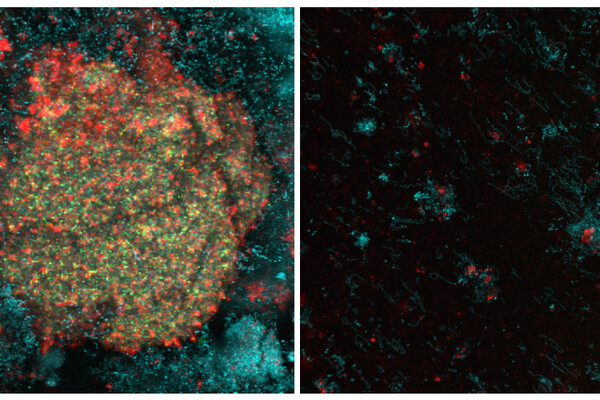
Treatment with a nanoparticle and hydrogen peroxide (right panel) left little in the way of bacteria (in blue) or the sticky biofilm matrix (in red), making the combination a potent force against dental plaque.
Briana Wilson, a third-year student at Penn Vet, is helping her peers establish a commercial goat dairy operation in Gambia.
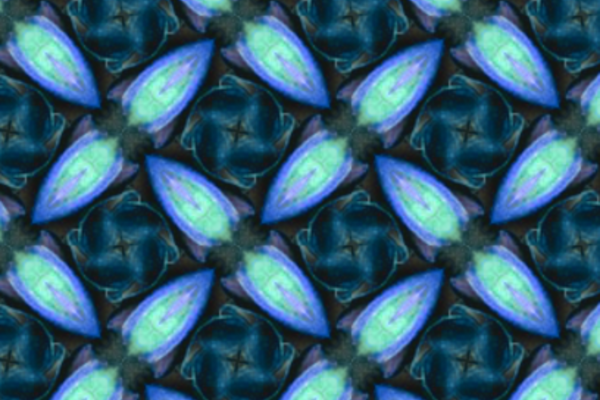
The unusual symmetries present in everyday wallpaper and wrapping paper played a role in the discovery of a new type of insulating material.

Cole Jadrosich and Lila Bhide of Facilities and Real Estate Services care for edible growing spaces around campus, including the Penn Community Garden.
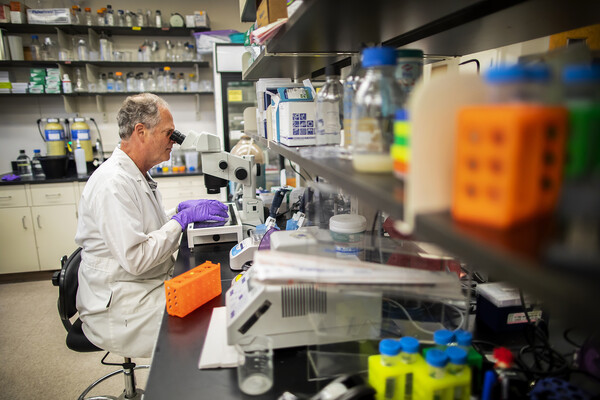
Parasitology professor James Lok’s studies of the development and basic biology of parasites, particularly the roundworm Strongyloides, have implications for finding new drug candidates. Veterinary schools have traditionally been strongholds of parasitology research, and Penn Vet is no exception. (Image: Eric Sucar)
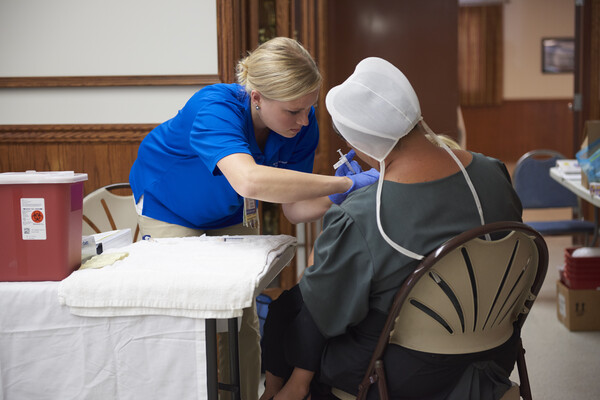
A child receives a vaccination as part of Lancaster General Health’s ChildProtect program. To date, the program has offered free vaccinations to more than 70,000 children, many of whom are members of Amish communities. (Photo: Peggy Peterson Photography)
Despite their reputation, spotted hyenas are often cooperative animals, dwelling in large groups and assisting one another during hunts. Penn biologist Erol Akçay modeled a theoretical social group to show how cooperation can arise or collapse. (Photo: Amiyaal Ilany)
The bicolor parrotfish is a member of a group of fish that dwells in the tropics, which a new study found to be, counterintuitively, slower-evolving than fish in colder ocean waters. (Image: Richard Ling/Wikipedia)

New findings from a study led by Penn Vet point to new strategies for treating ichthyosis, a skin disorder that affects both humans and dogs. (Photo credit: Elizabeth Mauldin)